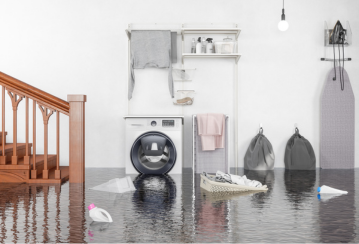News and Updates
Protect your home from basement flooding
After a cold winter, the springtime is a welcome change. But with the longer days and warmer weather comes new challenges. The potential for flooding increases as the snow melts and heavy rain falls. Canadians are experiencing more floods than ever before. According to the Government of Canada, flooding has increased 300% since the 1960s. But many homeowners haven't taken the proper steps to protect themselves or their properties. No matter what area you live in, flooding can happen to you. Don't wait for the water – take these proactive steps to minimize your risk of a flood damaging your home.
Quick and free things that everyone can do to reduce their risk of flooding1
-
Never pour fats, oils, and grease down your drains
-
Cut down on your water use during heavy rains
-
Keep the storm sewer grates on your street clear of debris, ice, and snow
-
Clean your eavestroughs and downspouts at least once a year
These are some initial steps to prevent flooding. However, if you’ve had a flood in the past, then you should take more significant steps to protect your home.
Reasons to invest in protecting your home1
-
If water got into your home before, it could get in again unless you take action.
-
Floods can have long-term health effects on your family if they cause mould to grow.
-
Homes in older neighbourhoods are generally more vulnerable than homes in newer neighbourhoods.
-
Climate change scientists report that severe rainstorms are occurring more often in many parts of Canada, and they’re expected to continue to escalate in frequency and severity.
First steps1
-
Visit your municipal government’s website or contact the public works, utilities, or building department to learn about their flooding programs.
-
Talk to your insurance broker to learn more about what types of water damage coverage are available. You may be eligible to purchase additional optional coverage, such as a sewer back-up/water endorsement or overland water protection for damage that isn’t covered. A small cost now can save you a lot of money later.
-
Get a plumber or contractor who’s fully versed in home and municipal drainage systems to help you understand the risks, the nature of your plumbing and sewer connections, and your best course of action.
Taking action1
More substantive measures are often more effective at reducing basement flooding. It’s highly recommended that you request the assistance of a licensed professional. Municipal governments usually require permits for the kinds of improvements listed below. Talk to your municipal government to ensure you or the person you’ve hired has the proper permits.
-
Seal any cracks in your foundation walls and basement floors.
-
Disconnect your downspouts and add extensions and splash pads to direct water flow over porous surfaces such as lawns or gardens, not driveways or walkways.
-
Disconnect your weeping tile from your home’s sanitary sewer lateral and install a sump-pit and sump pump to pump water from the weeping tile to the surface or storm sewer system.
-
Install the type of backwater valve your municipality recommends, allowing water to flow in only one direction – out of your house.
-
Install window wells and window well covers to reduce the crevasses that allow water to enter.
If you're a current OTIP policyholder, contact us at 1-833-494-0090 to review your existing home insurance policy and discuss your coverage options. If you’re not insured with OTIP and are shopping for home insurance, call us at 1-888-892-4935 to get a quote and receive a $20 gift card of your choice!





